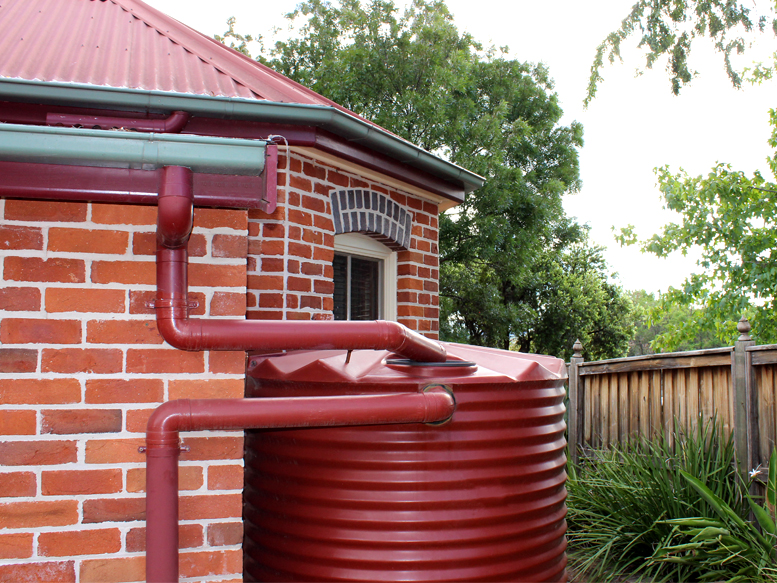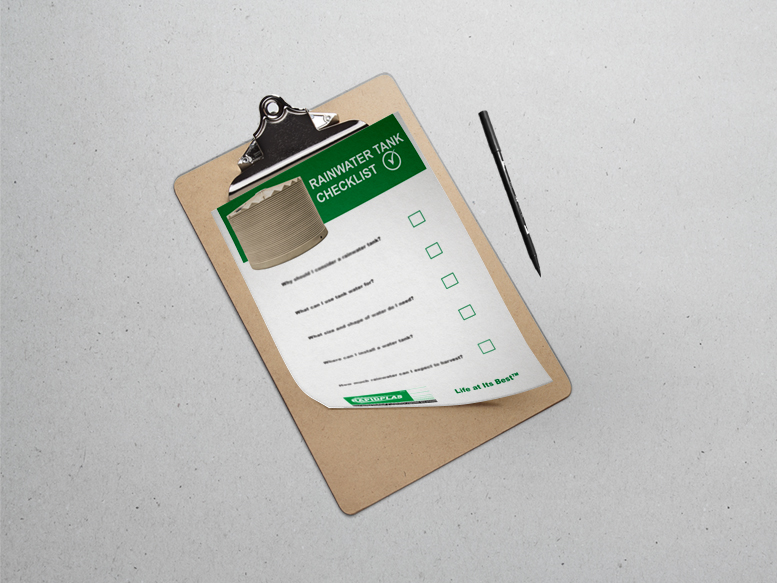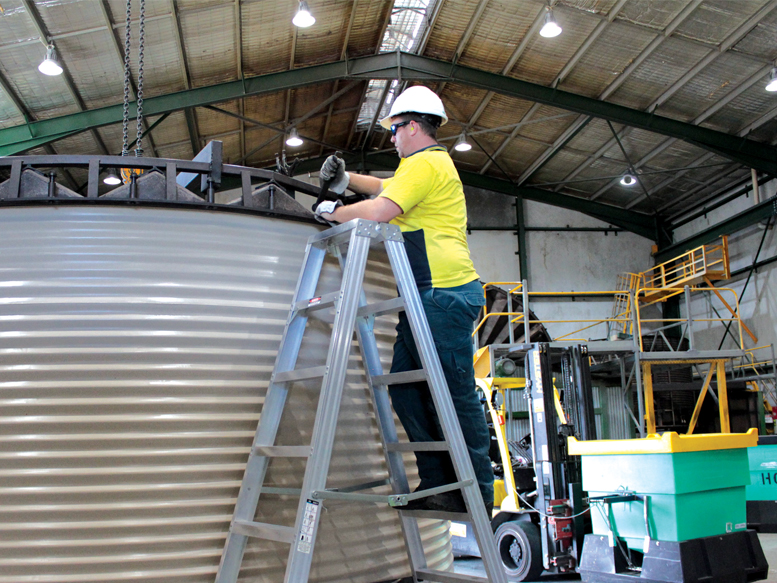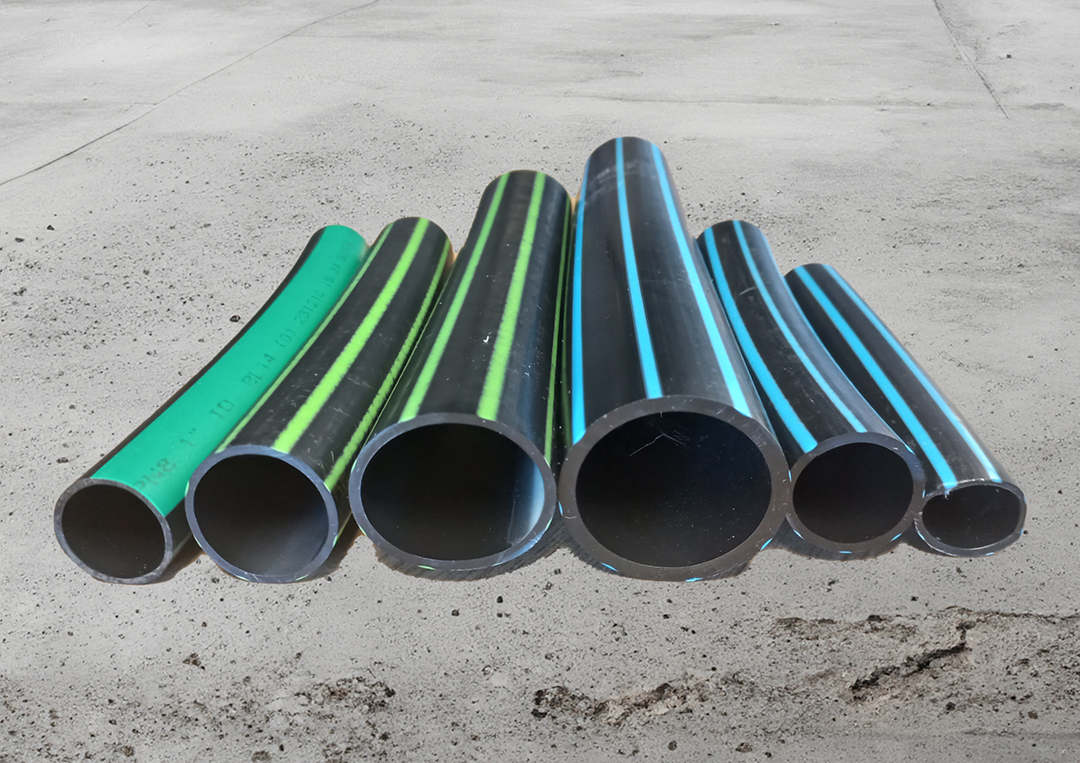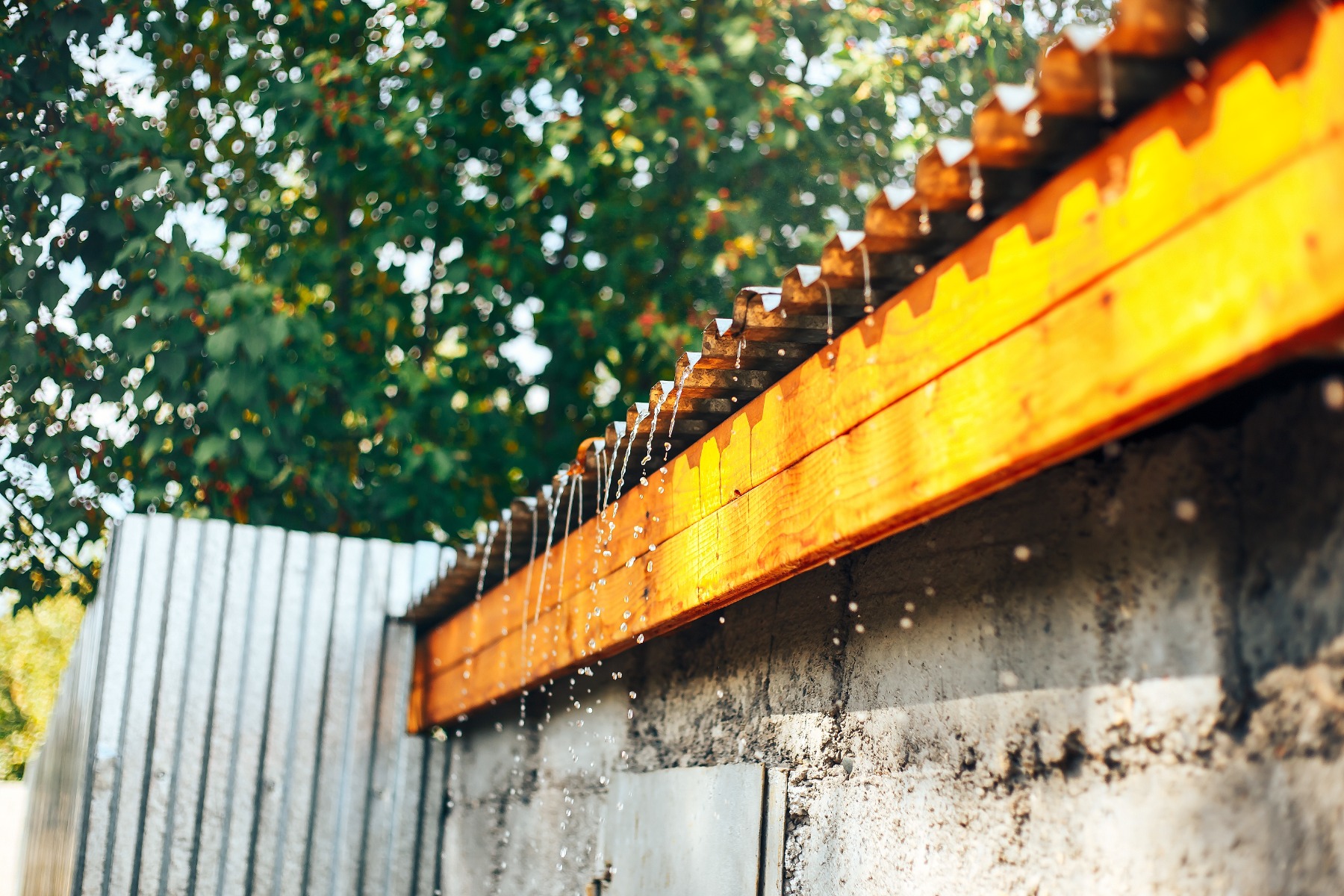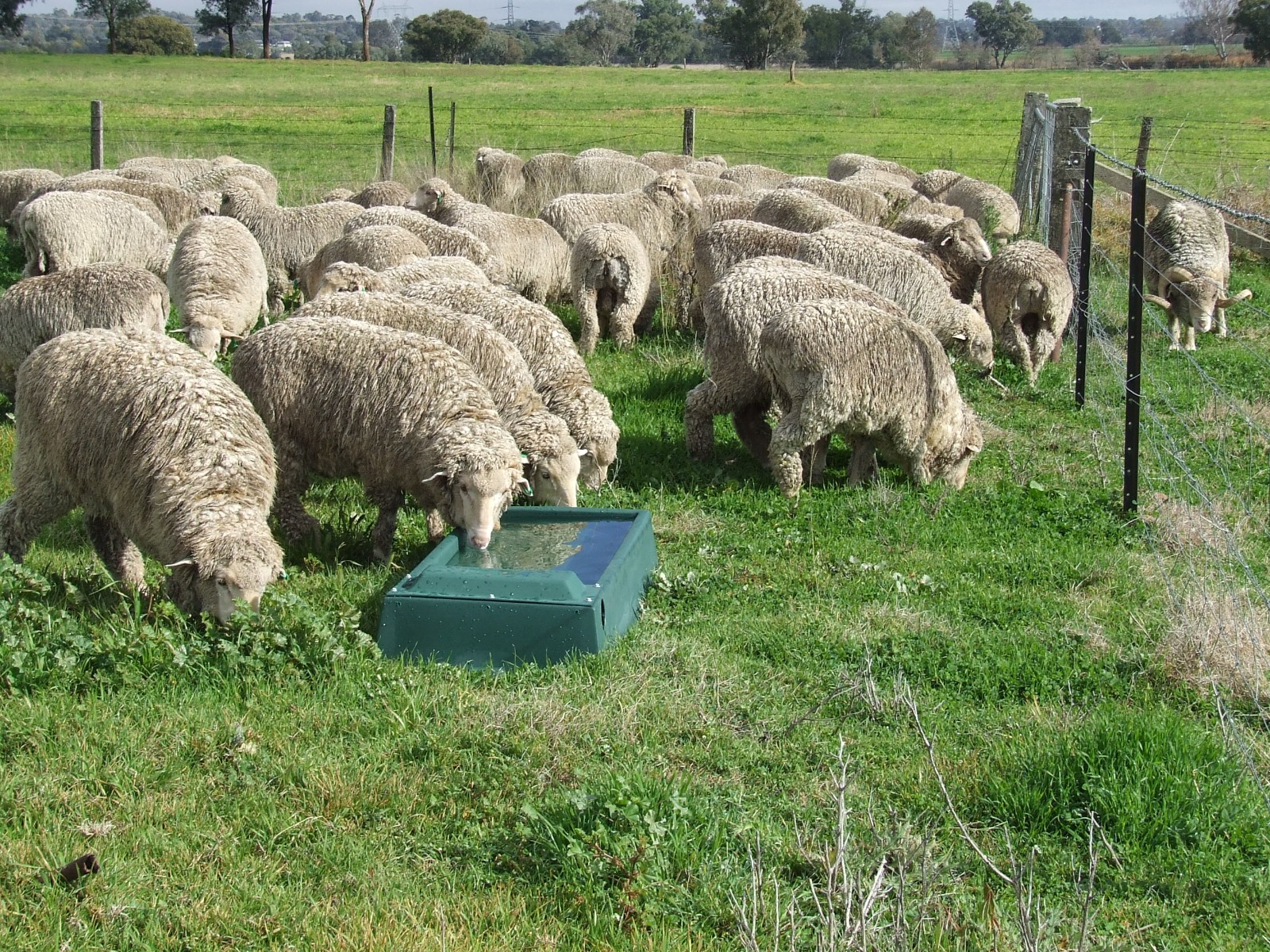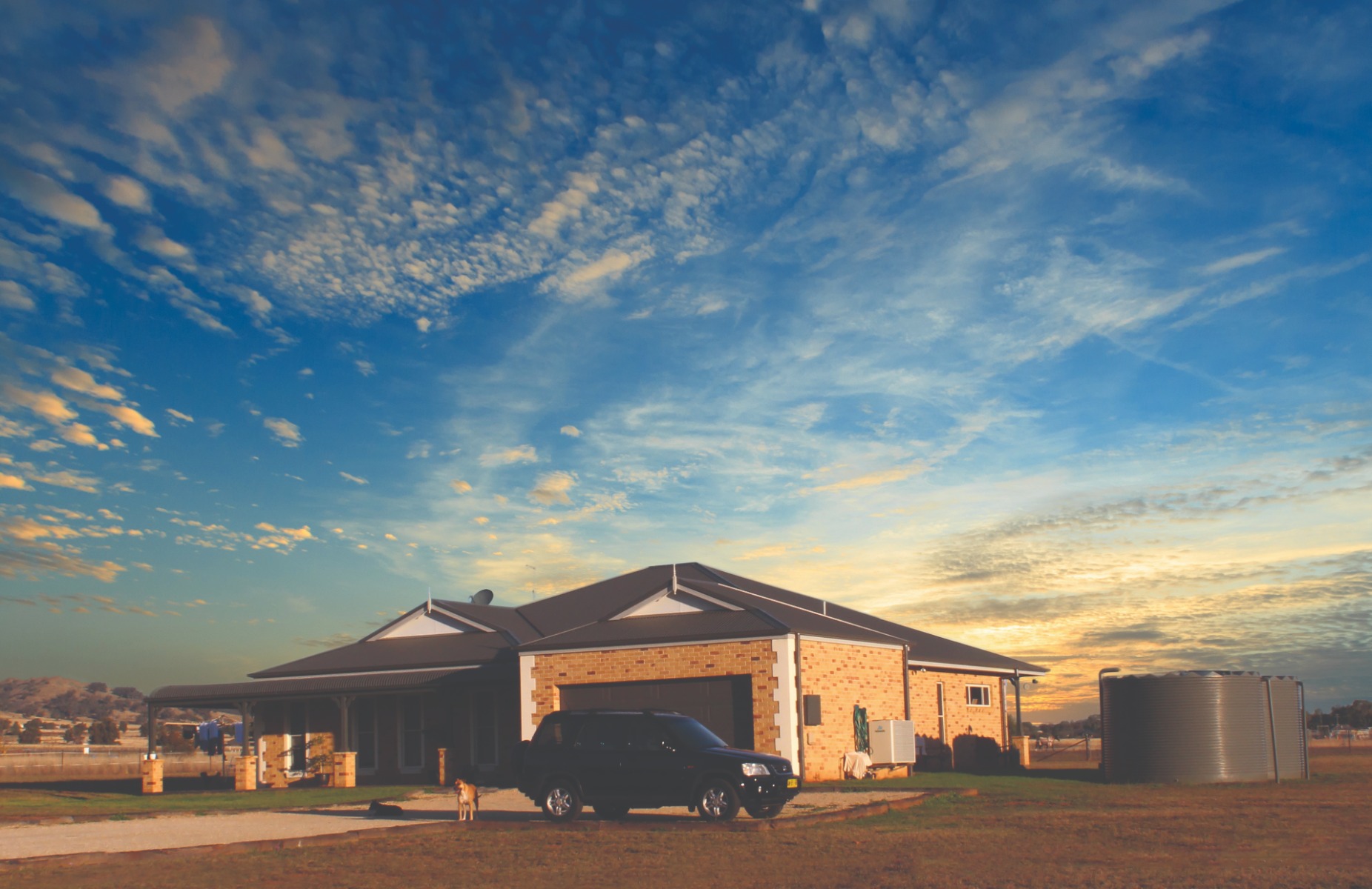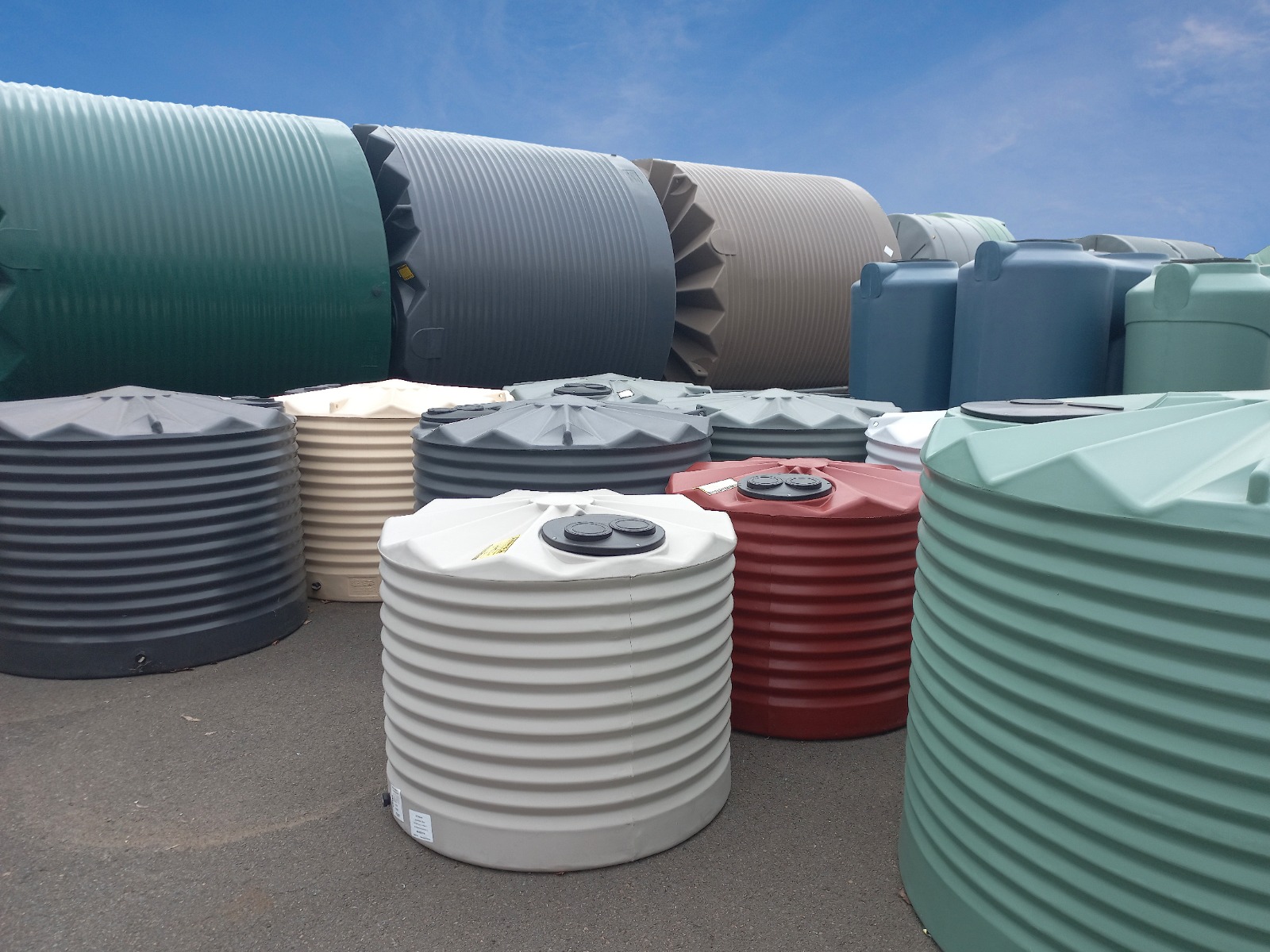There are lots of factors that might influence the best place to locate a water tank and these in turn will influence the preferred size, shape and colour of your tank. Luckily, there are many options available to consumers with water tanks available in a wide range of shapes, sizes and colours. Wherever you decide to place your water tank, in order to fill it, you need to connect the catchment area (the roof and gutters) to the water tank.
There are two types of connection:
- Wet pipe systems
- Dry pipe systems
Wet pipe systems
In a wet pipe system, the pipes from the gutters go vertically down the wall and are buried underground before emerging near the water tank as a riser connecting to the tank inlet. Because the underground pipes are below the level of the tank inlets, once the rain stops falling and the flow of water stops, water will remain trapped in the piping system – hence the name ‘wet pipe’
There are advantages and disadvantages of a wet pipe system:
The main benefit of wet systems is that they may be more aesthetically pleasing than dry systems as pipework is hidden underground and out of sight. This is particularly important if you have multiple catchment areas that require a complicated collection of pipes to deliver water to the tank or if the water tank is situated some distance away from the catchment.
While wet systems provide you with the flexibility to maximise all of the catchment areas on a roof and to position the water tank where you want it, they are more expensive to install as they require trenches to be dug to bury the plumbing.
The key disadvantage is that because water remains trapped in the pipe below the level of the water inlet on the tank, they are particularly vulnerable to mosquito infestations and anaerobic fermentation.
Anaerobic fermentation is a natural process that occurs when leaves and other organic materials decompose in an oxygen-starved environment such as water-filled pipes. This can be prevented by draining water from the pipes after rainfall so there is no water for organic matter to decompose in.
Mosquitoes breed in stagnant water and water-filled pipes are particularly attractive. Both Queensland and Northern Territory have regulations relating to the prevention of mosquito breeding and pipes that hold water must be screened to keep mosquitoes out.
Your plumber will be able to advise you on methods to drain water-filled pipes and the installation of insect screens.
Dry pipe systems
In a dry system, a simple sloping pipe connects the gutter to the tank inlet and water flows downhill from the gutter into the water tank. When the rain stops, the pipe drains into the water tank and with no residual water in the pipe, the system is dry.
Dry pipe systems are particularly applicable when the water tank is close to the home and you are happy for the pipework to be visible. They are typically quick and cheap to install, require little maintenance, and unlike wet systems, with no stagnant water, dry systems do not create problems of anaerobic fermentation or mosquito breeding.
Installation
State and local government planning and building regulations need to be taken into account before installing a rainwater tank. Rainwater systems also need to be installed in accordance with the relevant plumbing regulations and standards, and the connection of the rainwater tank to the guttering and the overflow connection to stormwater need to be done by a licensed plumber.
Ready to find out more? Talk to our expert team to find out how to configure your rainwater collection system and how we can help you. Call our team on 1800 816 299 or email sales@rapidplas.com.au with your enquiry.


